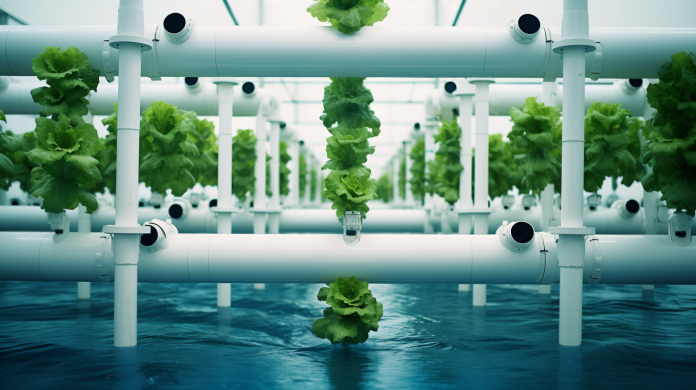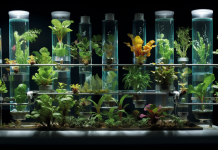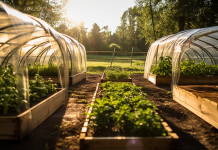Welcome to our article on Deep Water Culture (DWC) Basic Components of a DWC (Deep Water Culture) system.
DWC systems are widely used in hydroponics to cultivate plants in a nutrient-rich water solution.
In this concise guide, we will delve into the essential elements that make up a DWC system,
- the reservoir
- air pump
- air stone
- net pots
- nutrient solution
Gain an understanding of these crucial components as we explore their significance in successful hydroponic gardening.
Reservoir
The reservoir, being a critical component of a DWC system, provides the required volume of water for hydroponic gardening. In this soilless system, plant roots are directly submerged in nutrient-rich water.
Additionally, the reservoir acts as a storage tank, ensuring a continuous water supply enriched with essential nutrients to promote plant growth.
Furthermore, the reservoir plays a pivotal role in circulating water within the DWC system. It actively oxygenates the water through an air pump and air stones, ensuring essential oxygenation for root health.
This circulation aids in even nutrient distribution, maintaining the ideal balance for optimal plant growth.
Air Pump
The air pump facilitates the oxygenation process in a DWC system by supplying a constant flow of fresh air into the nutrient-rich water. This is essential for the growth and health of the plants in the system.
The air pump helps to prevent the water from becoming stagnant, which can lead to the growth of harmful bacteria and algae.
The air pump, in turn, supplies essential oxygen for the plants' metabolic processes, including nutrient absorption and root respiration. Moreover, it aids in regulating water temperature through circulation. Regular maintenance is crucial to prevent blockages or malfunctions.
Air Stone
An indispensable element of a DWC system is the air stone. When combined with the air pump, it collaboratively serves to boost oxygen levels within the nutrient solution. As a result, the plant roots receive vital oxygenation.
The benefits of using air stones in DWC systems are as follows:
- Enhanced oxygenation: Air stones create small bubbles, increasing the surface area of contact between air and water, facilitating efficient oxygen transfer.
- Improved nutrient absorption: Higher oxygen levels promote better nutrient uptake by the plant roots, leading to healthier and faster growth.
- Prevention of anaerobic conditions: Air stones prevent the formation of anaerobic zones in the nutrient solution, which can lead to the growth of harmful pathogens.
- Increased root development: The oxygen-rich environment created by air stones stimulates root growth, resulting in a larger and more robust root system.
There are various types of air stones available, including ceramic, porous stone, and diffuser discs. Each type differs in its effectiveness in oxygenating the nutrient solution. Ceramic air stones are the most effective due to their fine bubbles and long-lasting nature.
Net Pots
Utilizing net pots is essential for facilitating the growth and support of plants in a DWC system. Net pots are specially designed containers that allow the roots of plants to grow freely and receive oxygen and nutrients. There are different types of net pots available, including plastic net pots and fabric net pots.
Plastic net pots are durable and easy to clean, whereas fabric net pots promote better aeration and drainage.
The advantages of using net pots in DWC systems are as follows:
- net pots provide excellent support for plants, preventing them from falling or leaning over.
- the net pots allow for maximum oxygenation of the roots, ensuring optimal growth and preventing root rot.
- the net pots facilitate nutrient uptake by allowing the nutrient solution to flow freely around the roots.
- net pots are reusable, making them cost-effective and environmentally friendly.
Overall, incorporating net pots into a DWC system is crucial for promoting healthy plant growth and maximizing yields.
Nutrient Solution
One key aspect of a DWC system is the proper formulation and regular supply of a nutrient solution, as it provides essential elements for plant growth and development.
The benefits of using a nutrient solution in DWC systems are as follows:
- Improved nutrient uptake occurs because nutrient solutions are formulated to offer plants readily available nutrients. This guarantees that plants optimally absorb and utilize these nutrients
- Balanced nutrient ratios: Different types of nutrient solutions can be tailored to meet the specific needs of different plants, providing a balanced ratio of essential macronutrients:
nitrogen
phosphorus
potassium
and micronutrients
iron
zinc
manganese - Disease prevention: Nutrient solutions can be fortified with additives that help prevent the growth of harmful pathogens and diseases, promoting healthier plant growth.
- Nutrient solutions, in turn, enhance growth and yield by supplying plants with easily accessible nutrients. This promotes faster growth and higher yields than traditional soil-based cultivation methods.
Conclusion
- The reservoir is a crucial component that provides water volume, storage, and circulation for a DWC system.
- The air pump is essential for oxygenation, preventing stagnation, promoting nutrient absorption, and maintaining water temperature and circulation.
- The air stone increases oxygen levels, improves nutrient absorption, stimulates root development, and ceramic types are the most effective.
- Net pots facilitate plant growth, support roots, provide oxygenation and nutrient uptake, and are reusable and cost-effective.
- DIY systems are possible with these deep water culture (DWC) basic components
Supporting article:
Recirculating Deep Water Culture (RDWC) Explained



